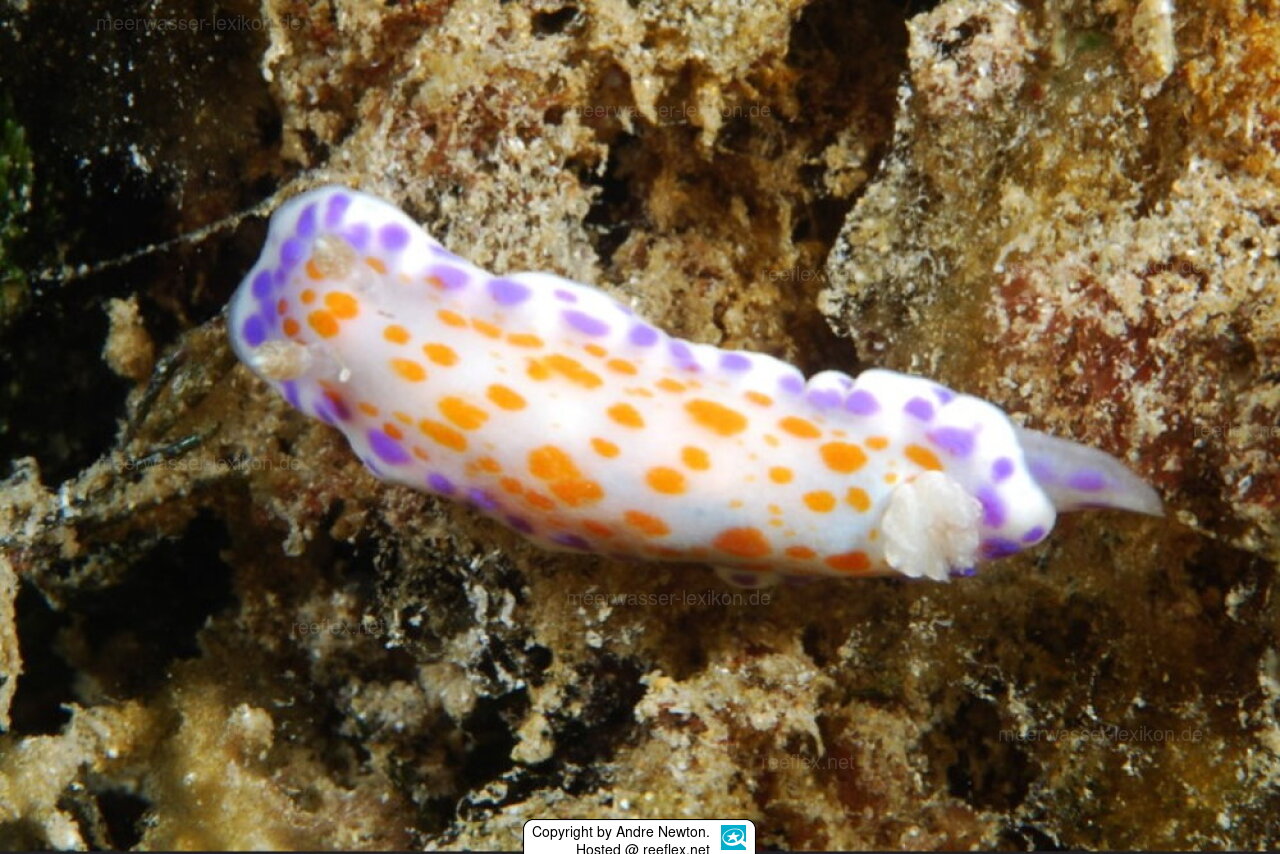Info
Chromodoris ambigua Rudman, 1987
Chromodoris ambigua was described from Griffiths Point, E. Head of Port Sorell, Tasmania, Australia.
The coat is translucent white with irregular orange spots. The edge of the mantle has an irregular, diffuse white band with purple spots. The spots vary in shape and size, giving each Chromodoris ambigua a unique pattern. The gills are translucent with white markings. The rhinophores are beige with white edges on the lamellae.
The nudibranch is commonly found in shallow coral reefs, lagoons and rocky coasts with abundant food sources and suitable habitats. Like all members of the genus, it can be assumed that the diet consists of certain sponges. There are no reliable findings. It has developed a variety of chemical defense mechanisms to protect itself from predators, including toxic compounds derived from its sponge diet. Feed exclusively on Chelonaphysilla violacea.
Similar to Chromodoris alternata and Thorunna perplexa.
Chromodoris ambigua was described from Griffiths Point, E. Head of Port Sorell, Tasmania, Australia.
The coat is translucent white with irregular orange spots. The edge of the mantle has an irregular, diffuse white band with purple spots. The spots vary in shape and size, giving each Chromodoris ambigua a unique pattern. The gills are translucent with white markings. The rhinophores are beige with white edges on the lamellae.
The nudibranch is commonly found in shallow coral reefs, lagoons and rocky coasts with abundant food sources and suitable habitats. Like all members of the genus, it can be assumed that the diet consists of certain sponges. There are no reliable findings. It has developed a variety of chemical defense mechanisms to protect itself from predators, including toxic compounds derived from its sponge diet. Feed exclusively on Chelonaphysilla violacea.
Similar to Chromodoris alternata and Thorunna perplexa.







 Andrew Newton, Australien
Andrew Newton, Australien
































